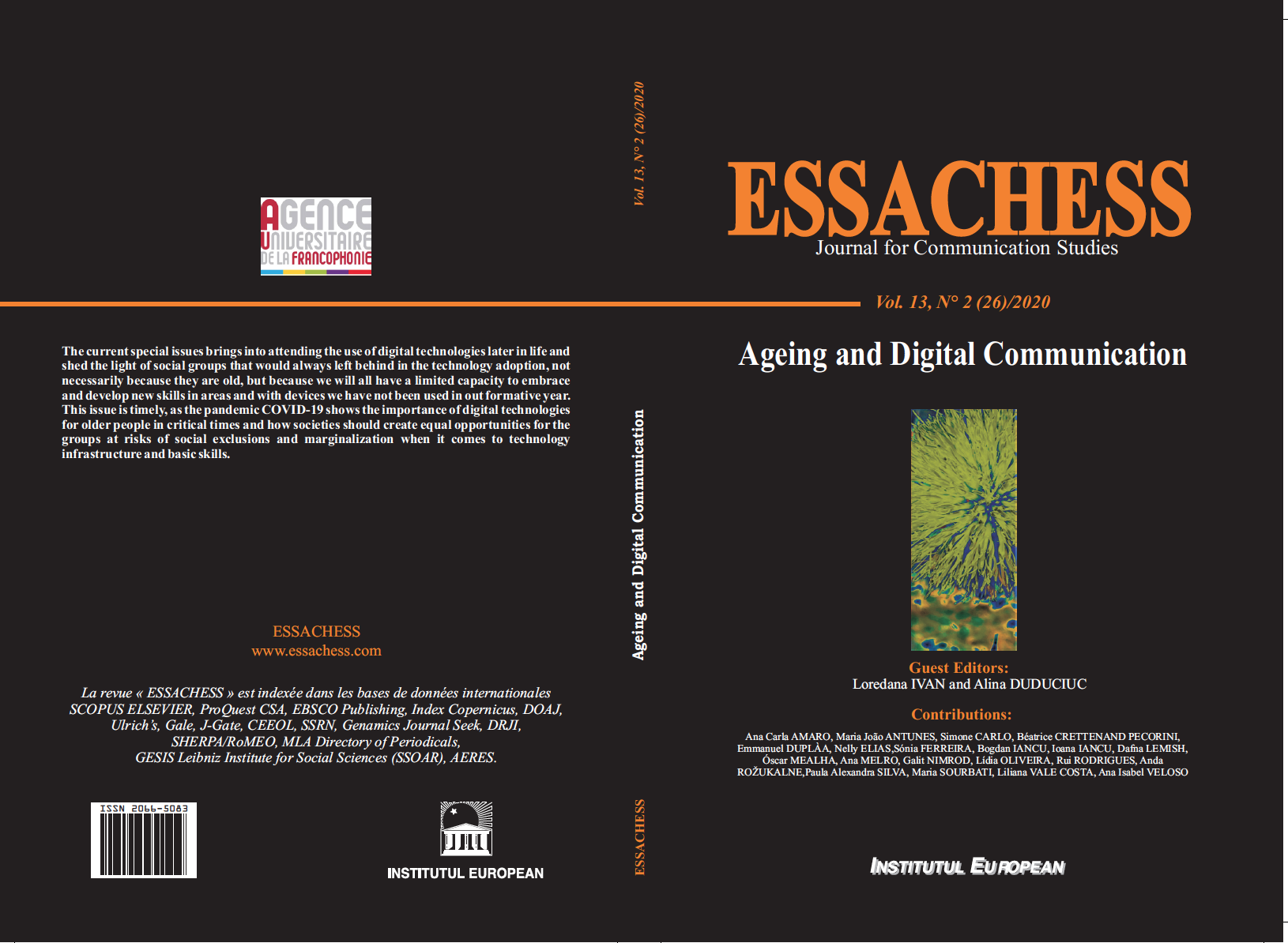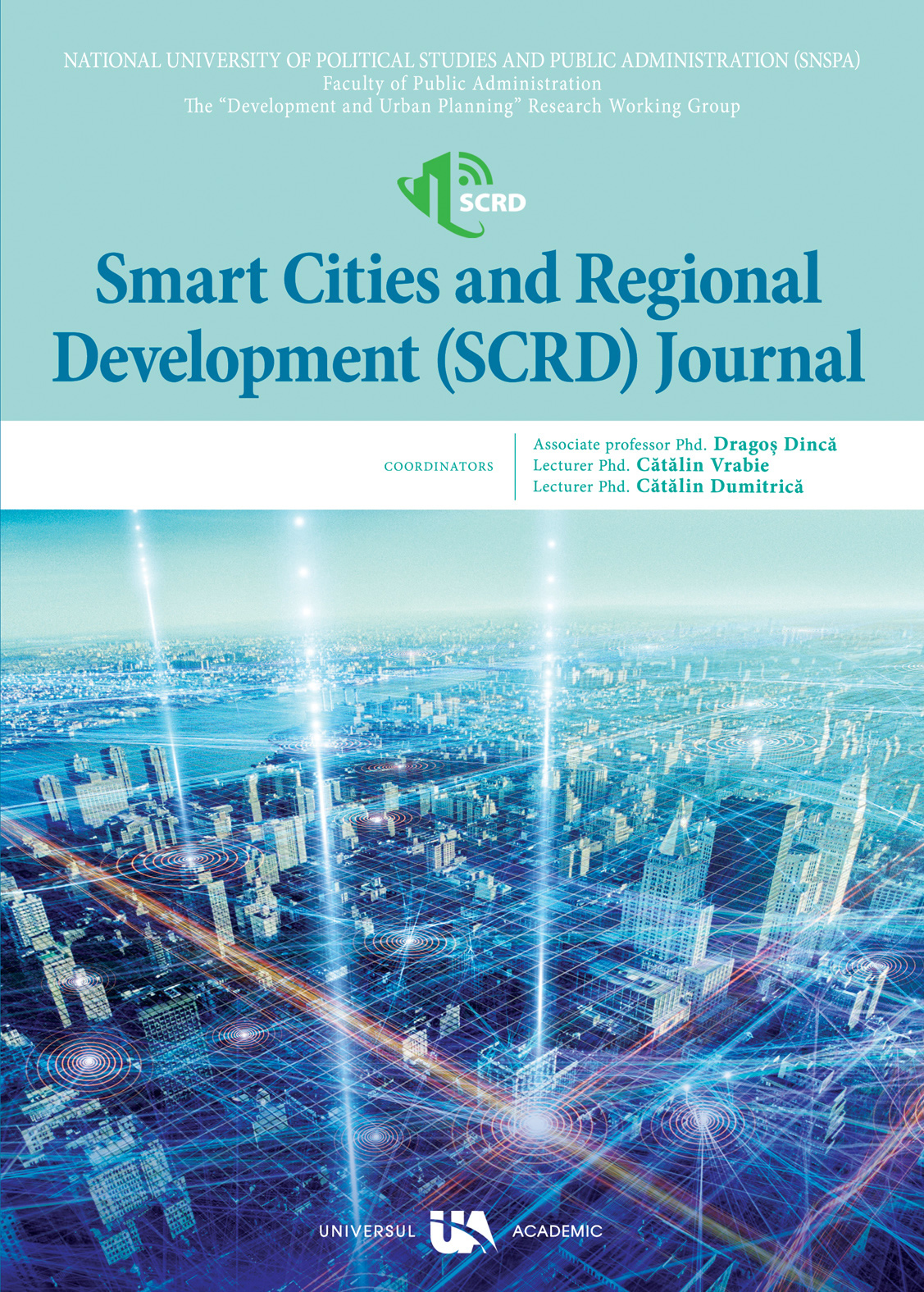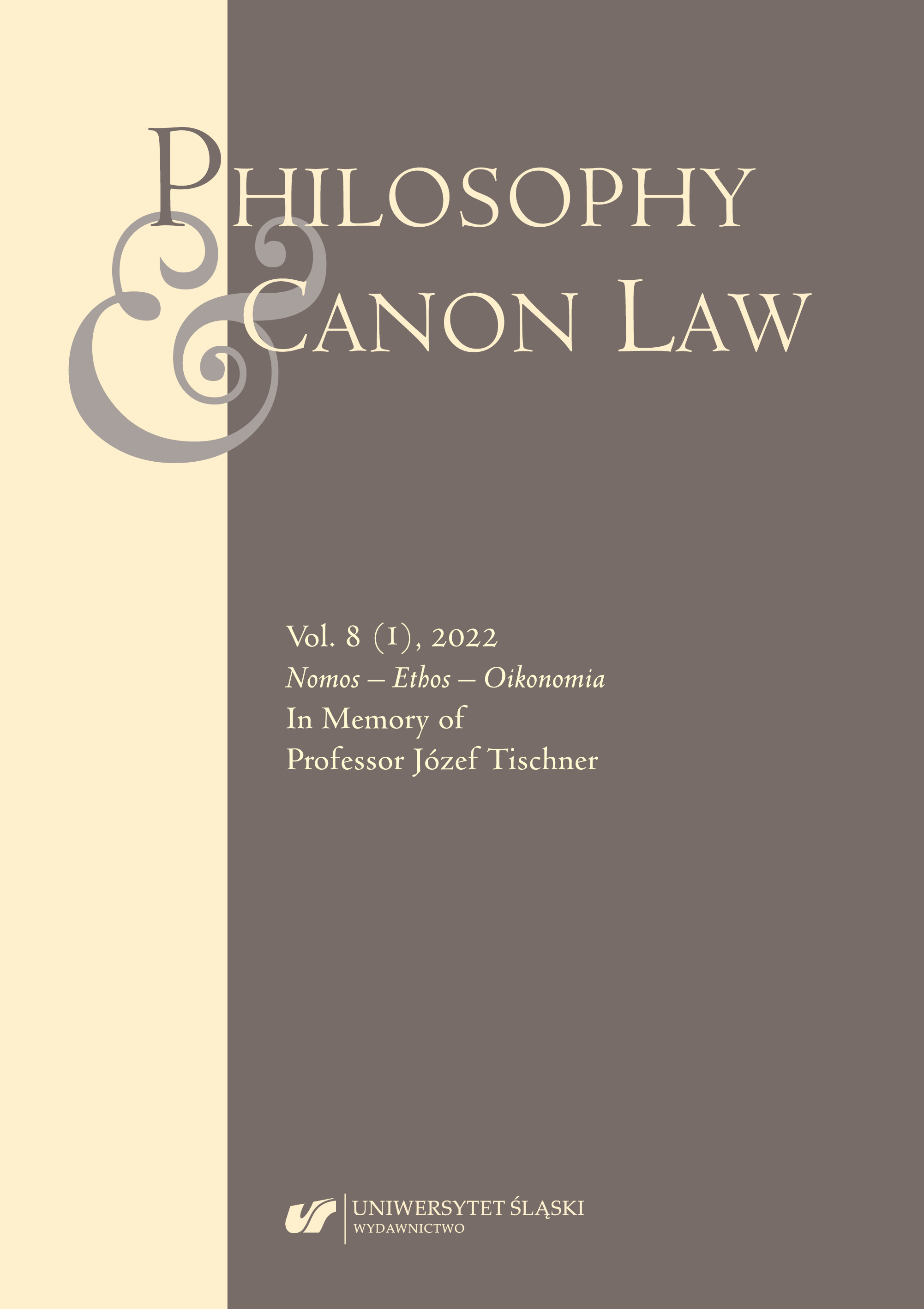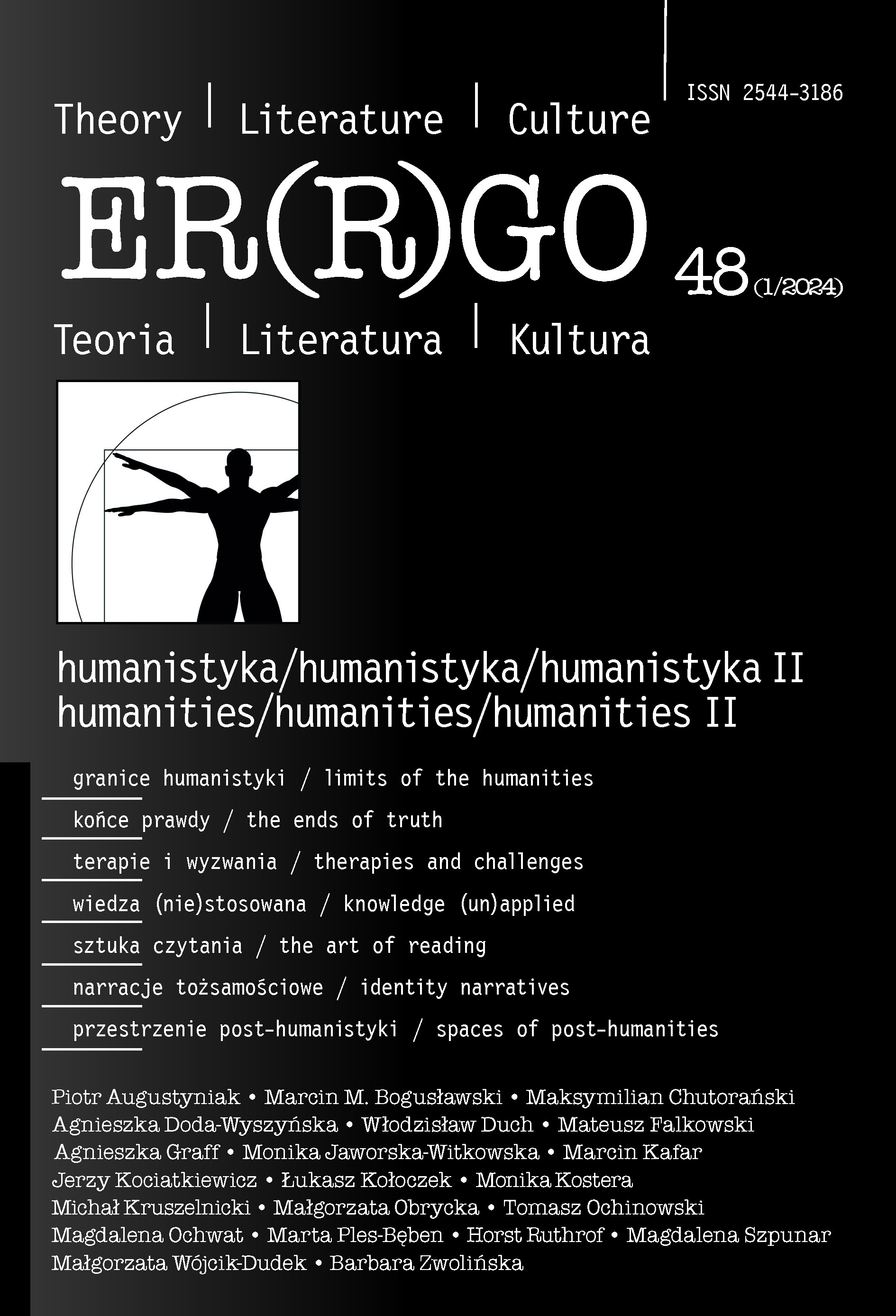
We kindly inform you that, as long as the subject affiliation of our 300.000+ articles is in progress, you might get unsufficient or no results on your third level or second level search. In this case, please broaden your search criteria.




In the folklore of many peoples, the luminous bodies and phenomena are related tothe traditional concepts of the world structure. In the Bulgarian popular astronomythe Milky Way is seen as a Straw Road. The folklore texts present the “road” as both aborder and a bond between the “own” and the “alien” space, between the earthly andthe “divine” world. It is a process of movement in the mythological space but it couldalso be a place where the worlds in this space meet. Such development of the conceptof the “road” in the Bulgarian popular tradition is related to liminal rituals typical ofcalendar festivals including Christmas.
More...
In Neoliberalism from Below—first published in Argentina in 2014—Verónica Gago examines how Latin American neoliberalism is propelled not just from above by international finance, corporations, and government, but also by the activities of migrant workers, vendors, sweatshop workers, and other marginalized groups. Using the massive illegal market La Salada in Buenos Aires as a point of departure, Gago shows how alternative economic practices, such as the sale of counterfeit goods produced in illegal textile factories, resist neoliberalism while simultaneously succumbing to its models of exploitative labor and production. Gago demonstrates how La Salada’s economic dynamics mirror those found throughout urban Latin America. In so doing, she provides a new theory of neoliberalism and a nuanced view of the tense mix of calculation and freedom, obedience and resistance, individualism and community, and legality and illegality that fuels the increasingly powerful popular economies of the global South’s large cities.
More...
Islam provides a perfect environment for the fast development of the Sharia law and the customary laws despite strong secularization efforts and pressure exercised by the government authorities. The Ottoman Empire was a multicultural society based on the principles of the Sharia law. The abolishment of the caliphate in Turkey and enforcement of the monogamy model of a family through the Kemalist revolution penalized the parallel Islam activities. After the collapse of the Ottoman Empire the millet system survived in Syria with its legal pluralism. Polygamy is currently on the rise in Syria as many men left the country or got killed in the fighting. The mass influx of Syrian women to Turkey results in the growth of parallel Islam de facto polygamous marriages in Turkey. The refugee women are looking for protection within the Sharia law family model, and the living law bypassed the Kemalist positive law secular principles. The same trend is visible in the countries that received many Muslim women that were claiming to the UNHCR their well-founded fear of persecution due to alleged transgressing of traditional social mores in their countries of origin. The same individuals sought later support and protection within the informal and effective parallel Islam networks in the resettlement countries. The legal pluralism is on the rise in the traditionally secular cultures due to the mass migration of single women preferred by the selection systems and resettlement criteria as agreed between UNHCR adjudicators and immigration authorities worldwide.
More...
The constitutional changes of 1989 in Kosovo, in addition to physical, political andpsychological pressure, exerted social pressure through job dismissals. Job dismissalsbecame a “normal” process, becoming a common way of exercising social pressure.In all these impossibilities in front of which a whole society is placed, self-organization oropposition through self-acting is expressed.In this course, the collapsed life on every sphere, and precisely this collapse burdened evenmore the daily life of these citizens, imposing reflection on these inabilities.While therepressive state was exclusive, degrading, and denigrating for a category of the society,precisely this category got self-integrated through resistance, which can not be calledotherwise but self-organization.In this flow, many subsequent developments came to the fore,such as the comprehensive mobilization of the society, so that individual tasks became selfvoluntarycollective duties and obligations.To this society, faced with such a situation, Solidarity was undoubtedly imposed in every areaof life, having the course from similarities, and “solidarity that comes from similarities is atits maximum when the collective conscience completely wraps up all our conscience andcomplies with it on all points” (Durkheim, 2004).
More...
In face of the global economic and climate crisis, a growing consensus of green, feminist and left movements converges around the idea of a reproductive, democratic economy. This article reviews the specific new models that have gained currency in recent discussions due to support by new Western movements, and then places these models in global and Hungarian contexts. First, it shows how new streams of thinking about reproductive autonomy in economy fit into a long-term tradition of critical thought on capitalism - and particularly, the tradition of critical research and strategic organizing that conceived capitalism not only in its relation to wage labor, but in terms of long chains of accumulation that reach from wage labor to various forms of informal, free and bonded labor, and “cheap” nature. Then, the article shows how system-level contradictions between capital’s limited accommodation capacity and labor’s reproduction have played out in the long crisis of the postwar global cycle starting from the 1970’s. It shows how labor’s capacity to reproduce itself outside of capitalist relations has served both as a puffer and a resource for maintaining relations of accumulation despite a decline in accommodation capacity, and as a new ground for anti-capitalist political organizing. The last part of the article looks at Hungary. It reviews the main shifts through which reproductive labor has been incorporated into accumulation streams throughout the history of modernization, and how growing areas of informal reproductive labor have been part of the social negotiation of the global crisis since the 1970’s locally. The article concludes that informal reproductive labor works as a systemic component in today’s accumulation regime. On the one hand, this shows its power - without the bottom-up subsidies informal reproductive labor provides to capital, systemic structures of accumulation would collapse. On the other hand, this shows that the capacities of reproductive labor are subordinated to accumulation streams. The question of solidarity economy, from this perspective, is how this existing capacity for reproduction can be organized in such a way that connects its power in growing reproductive circuits, and shields them from extraction.
More...
In the context of constant population aging, digital technologies are required especially for communication and geriatric care. However, before a large-scale deployment could be implemented, the general technological acceptance level should be assessed. The paper aims to descriptively analyze the perception of aging adults on mobile technology. Based on Technology Acceptance Model (TAM), the variables considered are emotional attachment on technology, actual use, perceived ease of use, perceived usefulness, and behavioral intentions. Methodologically, a set of semi-structured interviews have been conducted. The results show that although individuals love their mobile devices and although they perceive them as being useful, the devices are not easy to be used and there are numerous concerns regarding technology. Paradoxically, while they claim the like owning smart devices, they consider them too complex and intrusive.
More...
The increase of computer-mediated communication use and the aging population has led to a renewed interest in online communities and social networks for active aging and social support in daily living. However, a systematic understanding of the design recommendations in Senior Online Communities is still lacking in scientific documentation. The aim of this paper is to identify the design recommendations used in online communities that support active aging. In addition, this paper highlights some of the benefits of using online communities by older adults. Twenty-three papers published between January 2015 and May 2020 in English-language, peer-reviewed publications, met inclusion criteria. The review presents a set of recommendations for designing online communities to enhance older adults’ social interactions. A process that aims for “engagement” is suggested to strategically guide the design of Senior Online Communities: Interacting – Sense of Belonging (Role-playing, Storytelling, and Legacy) – Engaging.
More...
ociety is ageing at an unprecedented pace. In tandem, the number of technology-enabled solutions targeted at older adults continues to rise. It is therefore important to understand how to best communicate these solutions to seniors and facilitate use and adoption. To develop an understanding of what could be an improved strategy of communication and media content delivery for companies that provide older adults with technology-based solutions is the goal of this research. Aware of the potential stereotypes that may emerge towards the ageing population, this paper takes a special interest on ageism and gender to determine imbalances. With this in mind, this paper conducts an in-depth case study of the online presence of a company that developed a digital product for seniors that has been nominated for a Prize on Best Practice on Active and Healthy Ageing. Findings concerning the communication strategy of the company are extracted based on the analysis of their website and their five social media profiles. In total 120 posts were inspected, containing 120 text excerpts, 352 pictures, and 21 videos. Results show that the organisation sustains a continuous engagement with both seniors and the seniors’ organisations that use their product, privileging a relationship of close proximity. The representation of older adults is one that shows exceptionally happy and active seniors, who are surrounded by an aura of admiration. There seem to be no considerable differences with regards to gender.
More...
The question posed in the call “How the widespread of new technologies are changing the norms and practices of the later life?” was transformed in the main motivation to write the paper. LOCUS scientific research project addresses the subjects of Internet of Things, its impact in maintenaince and sustainability of Cultural Heritage and the important role of older generations to these operations. What the research team noticed is that sometimes it is the dissemination of technologies (and accompanying infrastructures) that promote their use and the creation of the need. And when the technologies do not exist, the infrastructures are compromised and/or nonexistent. It is considered that there is a before and an after period in the way in which the implementation of technological projects influences rural areas and older people. This also means that there is a high relevance in the second question of the call “How social actors, groups, institutions and mainstream media provide, spread or constrain ways of growing older via digital devices?” But also, a high importance of the project developed for the scientific knowledge advancement in the study areas (Communication, Technology, Sociology, Demography, Geography, etc.). The main conclusions of the paper are that digital technologies contributes to those Cultural Heritage maintenaince and sustainability, however, this is only possible with the mediation of oler people. Consequently, those people need to know or learn how to manage digital media and technology in order to contribute for the projects and technology development. Older people aim to participate in these projects and that also influences on their proficiency on technologies (on a win-win basis).
More...
The paper analyses asynchronous and synchronous forms of computer- mediated communication (CMC), their educational potentials and the advantages of using them in foreign language teaching. The paper shows the previous experiences of foreign and domestic teachers. The conclusion is that synchronous virtual encounters improve the skill of oral expression and vocabulary, while asynchronous electronic correspondence is more suitable for developing writing skills and directing attention to specific language rules. Successful use of CMC will depend primarily on the knowl- edge of the advantages and disadvantages of available communication technologies, the experience of teachers and students, and the setting of clear teaching objectives.
More...
The paper deals with the public sociologists of the former Julian Hochfeld’s circle in the time of the political system change in Poland. Among the sociologists of that school Jerzy J. Wiatr played the most important role as both a traditional and an integral public sociologist involved in the Left-wing party politics. The paper depicts his activities as a public intellectual who became an eminent political leader, as well as his work as a social and political analyst. The paper confronts his vision of the political system change, as presented in the writings of the 1989–1991 period, with the work of another eminent sociologist of that school, Zygmunt Bauman. The latter did not play any political role and was much less involved in commenting the political change that was happening at that time, being a lot more skeptical about its result.
More...
Lipset and Rokkan’s theory of cleavages as well as its interpretation and continuation of Bartolini and Mair became the basis for formulating the concept of the communist and post-communist cleavage. The concept of the post-communist cleavage gained solid empirical confirmation for the period from 1989 to the middle of the parliamentary term of 2001–2005. However, significant changes have taken place on the Polish political scene since then. The article, referring to the indicated authors, attempts to answer the question whether the post-communist cleavage in Poland lasts and if it will stay. The analysis focuses on the crisis of the post-communist side and the conflict on the post-Solidarity side of the cleavage. Empirical analyses show that as a result of the political conflict, the electorates of the two post-Solidarity parties – Civic Platform and Law and Justice – have clearly grown apart, and that the post-communist side is also divided, certainly on the level of political parties. The article describes various possibilities of a further development of the socio-political situation, but does not propose a definitive answer to the question of what to do with the post-communist division in Poland.
More...
The article has intended to study the action of Twitter-based media advocacy promoted by the Ministry of Health (MOH) of the Government of India, and World Health Organization (WHO) during the Covid-19 pandemic. Its goal was to assess the degree of the WHO and MOH's media campaigning for Covid-19, as well as the public's perception of this advocacy. In this regard, mixed methods have been used for data collection where a survey has been conducted with 125 respondents, who use Twitter, from Kolkata (India) with the help of random sampling. A content analysis of two well-known Twitter accounts was conducted, which helped to reflect the current trends that they follow. The findings of this research have reflected the choice of medium preferred by the respondents for receiving news and information during the Covid-19 pandemic. It has also helped to identify the Twitter handles and tweets they mostly follow and thereby the major factors influencing their choice. The outcome of this research has helped to study whether Twitter can be used for institutionalized health communication or not in the future.
More...
Our study demonstrates that the analysis of culture should be embedded into the history of capitalism. Through this understanding of culture's materiality, we highlight that culture is not only a spiritual but also a materially embedded phenomenon. We argue that this analysis is also essential to outline culture's role in a post-capitalist world.Our study offers four perspectives to analyze the diverse, often indirect, relationship between culture and capitalism. We show how the diversity of culture is more than heterogeneity but rather part of class conflicts and struggles. By examining the cultural institutions, our paper points out that they play a crucial role in the reproduction of the laborforce. It also points out that global and nation-state-led cultural production are not contradictory but entangled phenomena. Finally, our paper emphasizes that the relationship between culture and capitalism cannot be understood as abstract laws but must also always consider the social trajectories of professional cultural producers, who are a central but often invisible dark matter.
More...
The main objective of this study was to determine the cost-effectiveness of green spaces in controlling environmental and health risks in residential areas. The study aimed at comparing the costs of using green spaces and the costs of conventional infrastructure in controlling environmental and health risks. Many scholars have qualitatively reported that residential home greenery is recognized as an important component for the control of environmental and health risks. However, the cost-effectiveness of green spaces relative to man-made solutions for the same is not documented with certainty. The study deployed a questionnaire, field observation and measurement methods for data collection. The study revealed that, depending on location, residents face five major environmental and health risks; fugitive dust, violent wind, runoffs, animal habitat deterioration, soil erosion and flood water. The percentage of households using green spaces as a strategy for controlling the aforementioned risks is still minimal despite the high monetary saving. The majority of the respondents’ home greeneries are incorrectly orientated and home entrances appear to be more of a factor in determining where green space is located. With exception of risks of run-offs, utilization of green spaces in controlling environmental and health risks saves more than 90% of costs compared to costs for a man-made solution and 61% for run-off control. Results imply that there is a need for advocacy for greater realization of green space as a cost-effective strategy in controlling environmental and health risks among residents, environmentalists, planners and disaster risk practitioners in Dar e salaam City, Tanzania.
More...
The present article examines Józef Tischner’s idea of upbringing (wychowanie) in establishing the new awareness of solidarity among the Polish workers and people through an awakening to conscience. The present moment served as a revolutionary alternative to socialism. I look at Tischner’s critique of Marxism and the central issue surrounding base and superstructure. Then I turn to his recovery of the Polish tradition of ethical ideals, especially in the person of Maximilian Kolbe and John Paul II. The text provides a detailed analysis of the chapter on upbringing in The Spirit of Solidarity. Tischner’s notion that upbringing is a personal bond established in trust to live in hope for improvement in mind and heart is placed in the context of the solidarity as a social bond establishing an ethical community transcending the political quest for power and the need to find an enemy. The text analyzes the various counterfeit forms of education in order to deepen our awareness of the meaning of authentic upbringing. Salient points of his teaching are discussed in conclusion.
More...
Didactics is a function of an educational system based on examination-observation of the people who participate in the process of teaching and learning. In the process of conveying knowledge this observation of a student by a teacher/master, and vice versa, every now and then builds a practice of independent thinking. On the one hand, the process enables the development of ideas, but, on the other hand, also distorts them and exposes a humanities student to the pitfall of ideology. In my reflections about the disassembly of ideas and deteriorating education I shall make use of the concept of cognitive bias, the polemic about the contemporary University (Bill Readings), the concept of Jacques Lacan’s discourses, Hannah Arendt’s findings about willing and ideology, and Niklas Luhmann’s assumptions of social systems theory understood as autopoietic systems of codified rules of operation.
More...